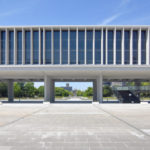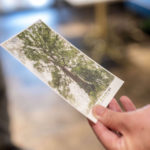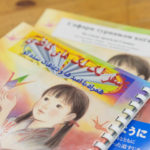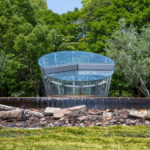Meeting Trees : Sending Trees that Survived Atomic Bombing from Hiroshima to the World

Green Legacy Hiroshima Initiative (GLH) is a citizen’s group in Hiroshima City which works to preserve and spread worldwide the invaluable seeds and saplings from trees that survived the atomic bombing of Hiroshima. The group hopes to use A-bomb survivor trees to speak out against war and nuclear weapons, convey the value of nature, and provide a chance to re-examine humanity.
We spoke with two figures who help make GLH’s mission possible: Dr. Nassrine Azimi, senior advisor at the United Nations Institute for Training and Research (UNITAR), and Ms. Watanabe Tomoko, executive director of the NGO organization, ANT-Hiroshima.
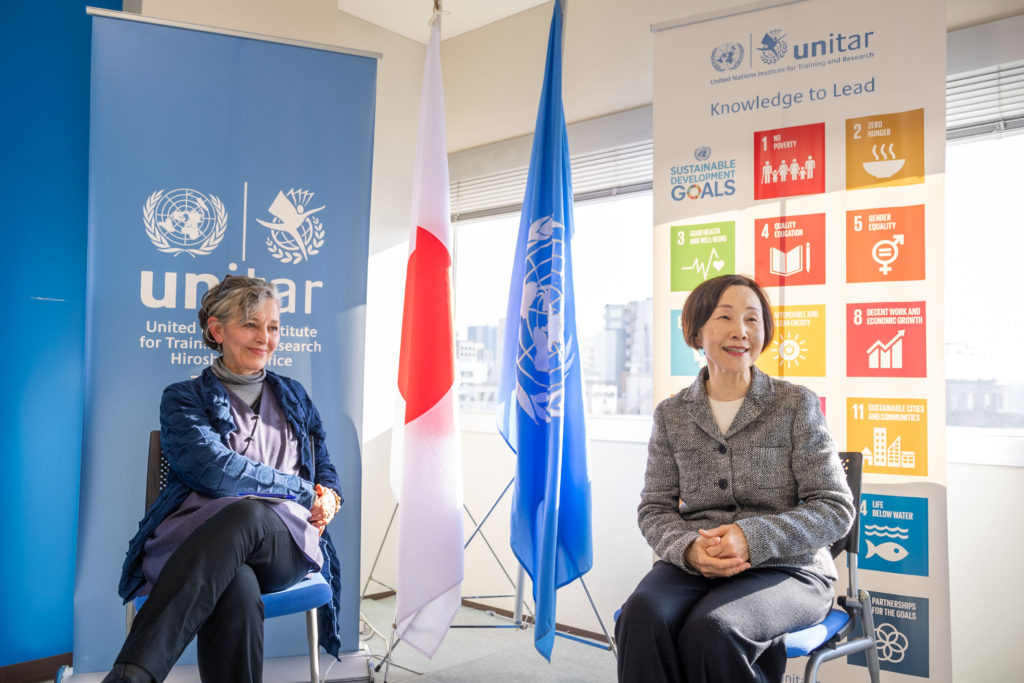
GLH began its activities in 2011. Dr. Azimi, who had worked with the United Nations in Hiroshima since before GLH was founded, reflects: “For many years, we had been taking in trainees from Asia and the Pacific, and providing them with training centered on peace, world heritage, and peacebuilding in post-conflict reconstruction. What these trainees inevitably asked was, ‘What can one do from within Hiroshima?’ At the time, I was unable to respond with a clear answer.” It was as she continued to carefully think about what Hiroshima could share with the world to promote world peace that Dr. Azimi met Ms. Watanabe, who was working to safeguard A-bomb survivor trees and promote their importance.
About meeting Dr. Azimi for the first time, Ms. Watanabe comments: “Unlike Nassrine, who has been all around the world, I was born and raised in Hiroshima. It’s amazing to think that the two of us met in Hiroshima and the Green Legacy Hiroshima project was able to begin. It was truly an exciting experience for the both of us to meet each other. I have mainly been active on a local city level in Hiroshima, while Nassrine has been active on a global level, working within the large United Nations organization. What connected the two of us despite these differences was our mutual love for trees.”
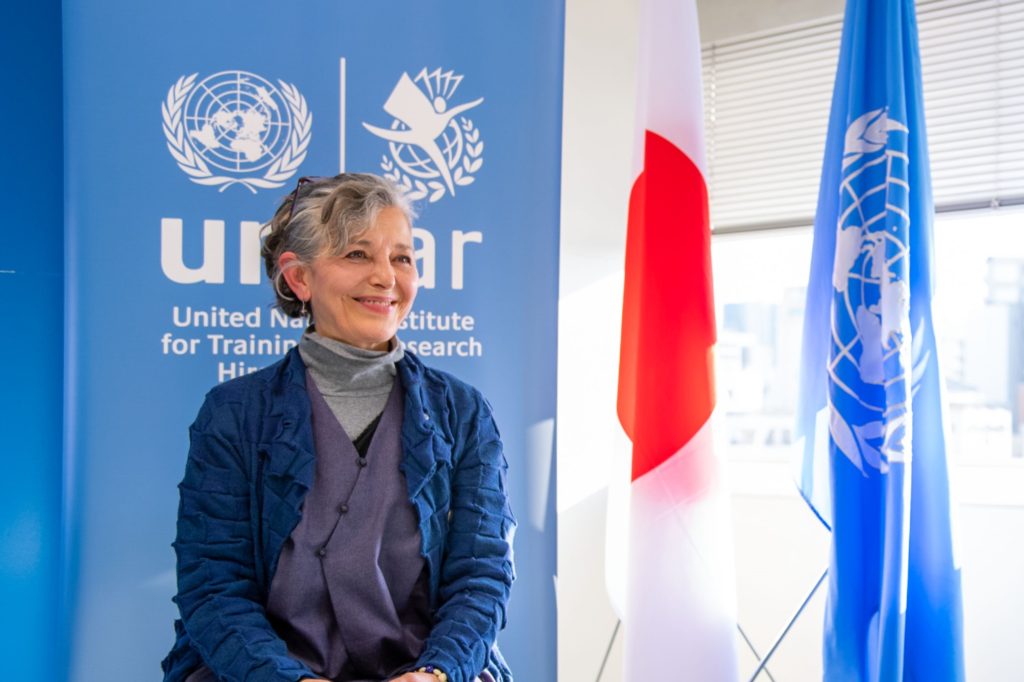
A major catalyst for the two meeting, and the subsequent start of GLH activities, was the nuclear disaster that occurred during the Great East Japan Earthquake in 2011.
Dr. Azimi comments: “I realized that trees are incredibly important, as they can be used to bring things together and raise a variety of issues, including the history and the natural environment, rejection of war, and hopes for the abolition of nuclear weapons. Trees watch over the way we live—they remember everything that has happened up to the present, and share it all with us in the form of a message.” She thus set out with Ms. Watanabe to spread and share the power of trees with the world through the A-bomb survivor trees that remained in Hiroshima.

For Ms. Watanabe, Dr. Azimi’s words helped turn the trees she had previously taken for granted while living in Hiroshima into something much larger and more important.
“Trees are something you connect with rather than something you just look at. For us, trees are ‘things you meet.’ They tell many stories and have much to teach us. What’s more is the people who continue even today to watch over and care for the 160 trees that survived the atomic bombing. Nassrine said that you could not find a more incredible story anywhere else on earth, and I agreed 100% when I heard that. I think it was only thanks to Nassrine’s discovery that I was able to come to realize this treasure in Hiroshima. Before then, as someone who was born and raised in Hiroshima, trees were just trees to me. But Nassrine encouraged me to try meeting them anew, and, when I tried to reconnect with and ‘meet’ the trees that were simply standing next to me, I found the experience powerful enough to change my life.”

Collecting seeds from an A-bomb survivor ginkgo tree at Shukkeien Garden (November 2018)

Students raising the saplings of A-bomb survivor ginkgo trees at Oberlin College in the United States (2016)
GLH conveys and re-examines a variety of issues through its work with Hiroshima A-bomb survivor trees. As of 2021, the organization has sent seeds and saplings from these trees collected in Hiroshima to 38 countries and regions worldwide, which are now budding in 124 locations.
“Nassrine’s famous saying goes, ‘Trees don’t hate anyone.’ Trees watch over the way we live—they remember everything that has happened up to the present, and share it all with us in the form of a message” (Ms. Watanabe).
“Everyone in every part of the world loves trees, from prime ministers to school teachers and children. Just saying that these seedlings are the children of trees that survived the atomic bombing in Hiroshima is quite impactful in itself and needs no further explanation. Green Legacy Hiroshima is very simple in its activities, and many people resonate with our work. What we mustn’t forget, however, is that the real heroes are the people who have continued to protect and nurture the A-bomb survivor trees. As part of a 1,000-year project, I hope to continue protecting these trees moving forward, and share the beauty of trees together with children from around the world” (Dr. Azimi).
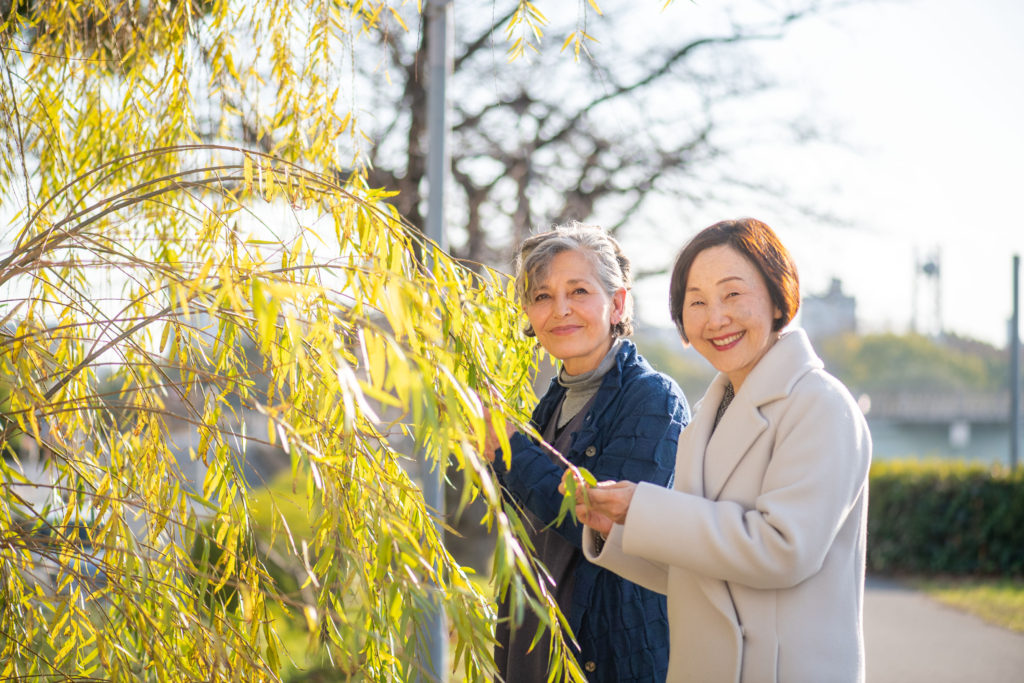
Meeting the weeping willow which was the closest surviving tree to the center of the atomic bombing.
While activities cannot go quite as one might wish due to COVID-19, the trees that survived the atomic bombing continue to watch over us today in Hiroshima. Why not try “meeting” trees again for yourself?

Green Legacy Hiroshima Initiative
Website: https://glh.unitar.org/

United Nations Institute for Training and Research (UNITAR) Hiroshima
Website: https://www.unitar.org/ja/hiroshima

ANT-Hiroshima
Telephone: 082‐502‐6304
Address: Aki Legal Building. 5F, 8-14 Kami-Hatchobori, Naka-ku, Hiroshima
Website: https://ant-hiroshima.org/
Tags associated with this article



